Abstract
In the Netherlands, the frequency of encephalitis after smallpox vaccination is estimated to be 1 in 4000 primary vaccinations in adults and 1 in 50 000 revaccinations. Since immunity seems to reduce the frequency of this complication, it was thought that it might be possible to prevent post-vaccinal encephalitis by a combination of passive and active immunization, a basic immunity being obtainable without risk by the injection of antivaccinia gamma-globulin (AGG). This theory was tested in Dutch military recruits in a double-blind experiment. At the time of primary vaccination the recruits were given an injection in the other arm, either of 2 ml of 16% AGG (treated group) or of 2 ml of placebo solution (control group).
It appeared that administration of AGG had a prophylactic effect, since only 3 cases of post-vaccinal encephalitis occurred among the 53 630 recruits in the treated group, as compared with 13 among the 53 044 recruits in the control group. The difference of 10 is significant. The best estimate of the reduction in the frequency brought about by injection of 2 ml of 16% AGG is 77%; the lower limit of this reduction is 29%.
The administration of 2 ml of 16% AGG did not interfere with the development of active immunity.
Full text
PDF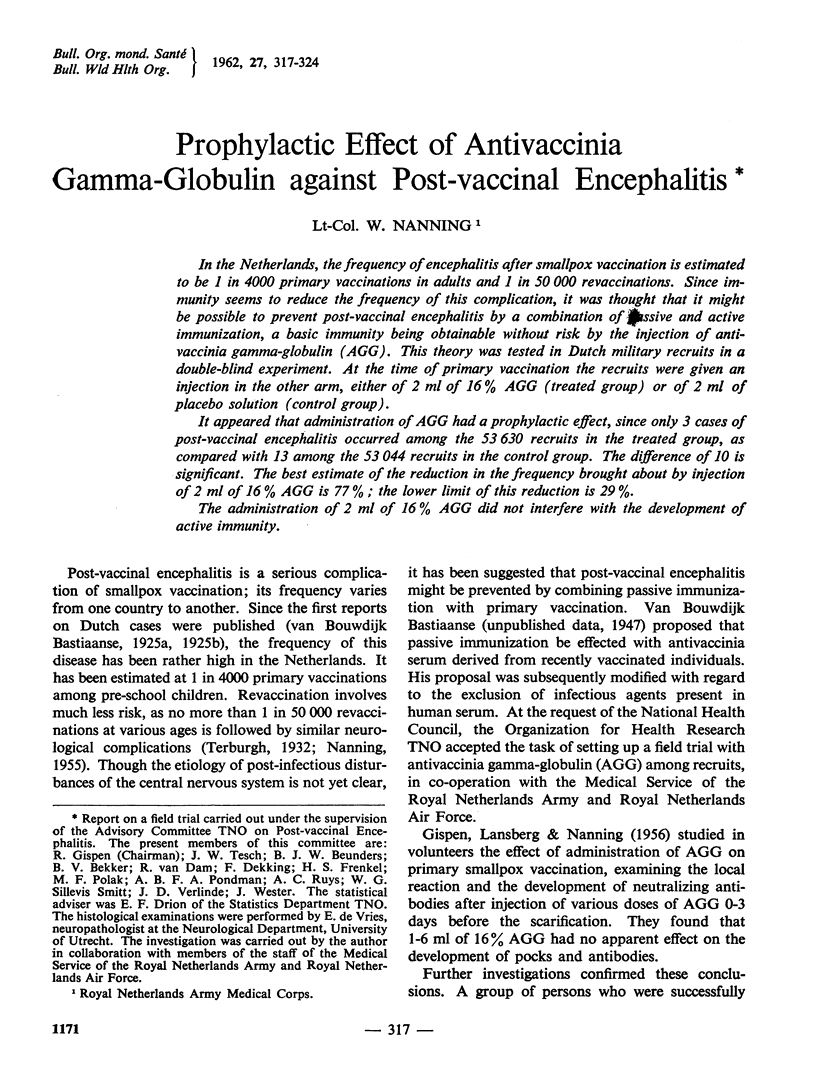

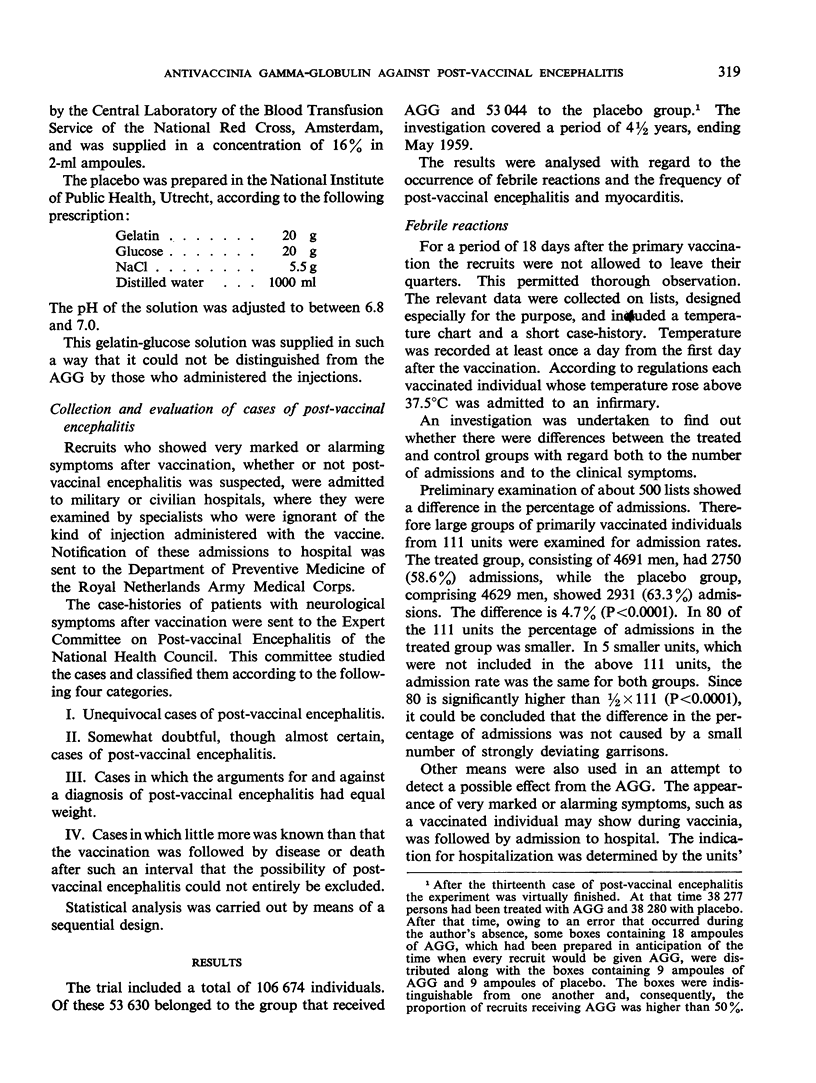
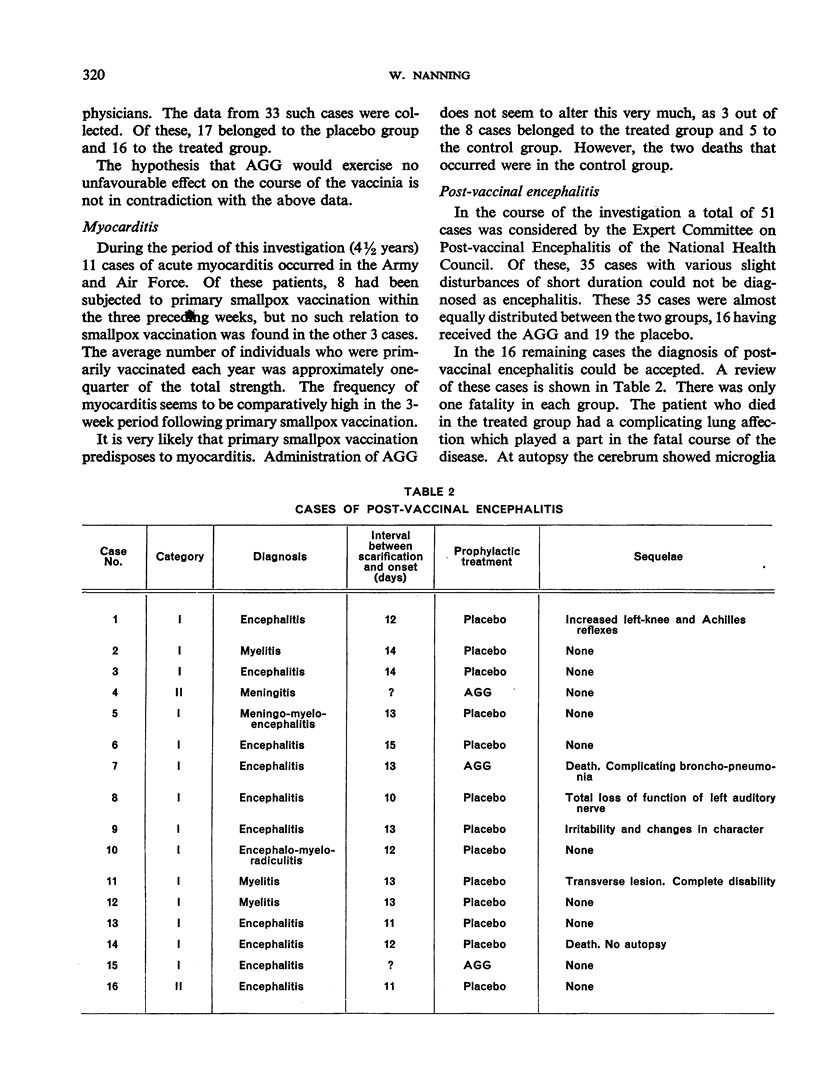
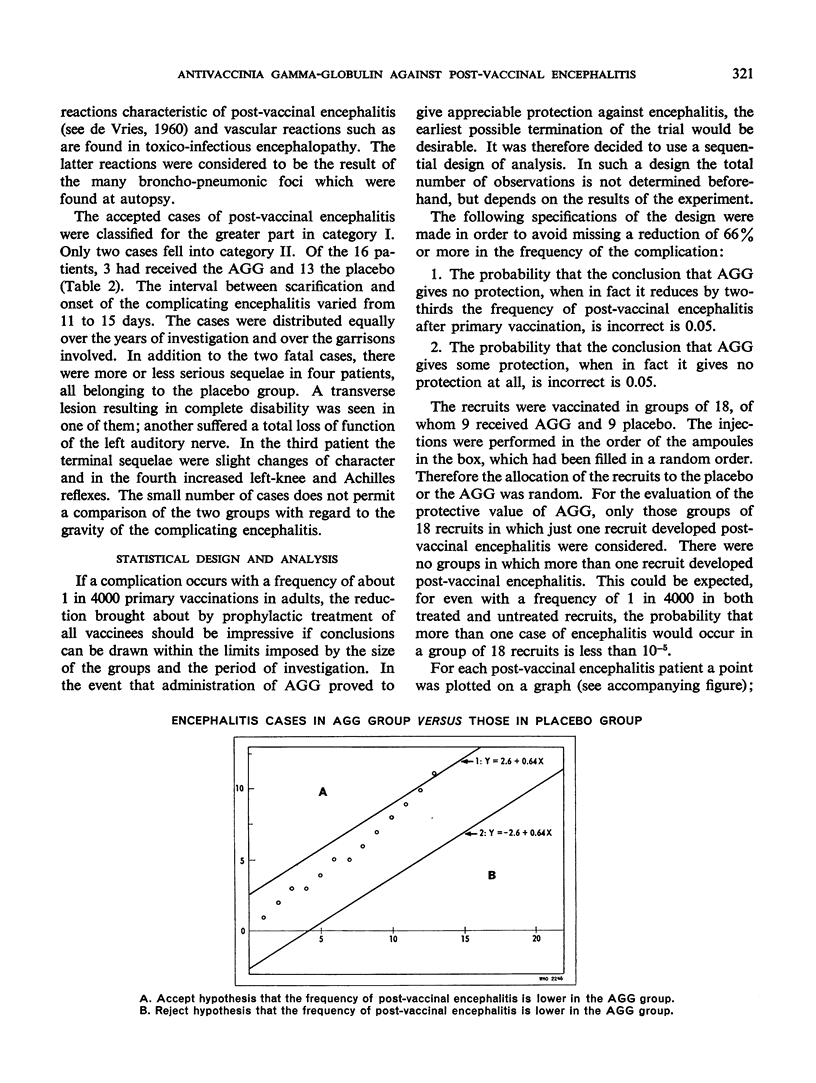

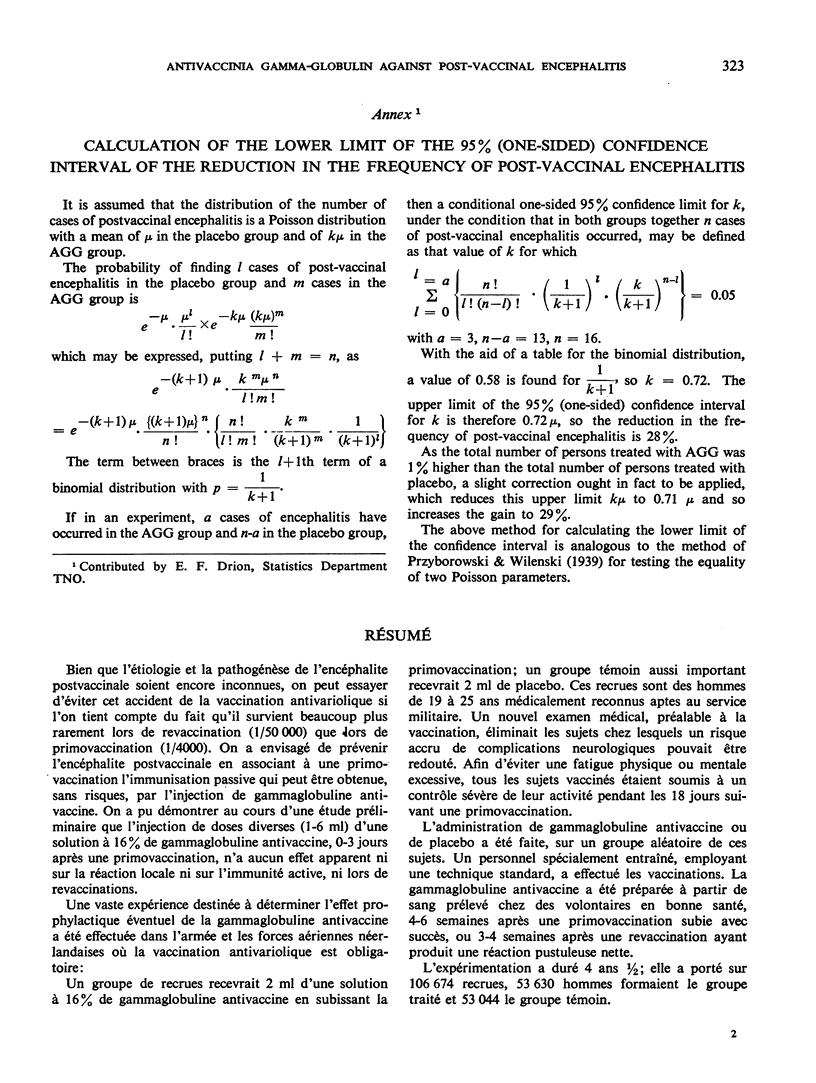

Selected References
These references are in PubMed. This may not be the complete list of references from this article.
- GISPEN R., LANSBERG H. P., NANNING W. The effect of antivaccinia gamma globulin on smallpox vaccination in view of a proposed attempt to prevent postvaccinal encephalitis. Antonie Van Leeuwenhoek. 1956;22(1):89–102. doi: 10.1007/BF02538316. [DOI] [PubMed] [Google Scholar]


